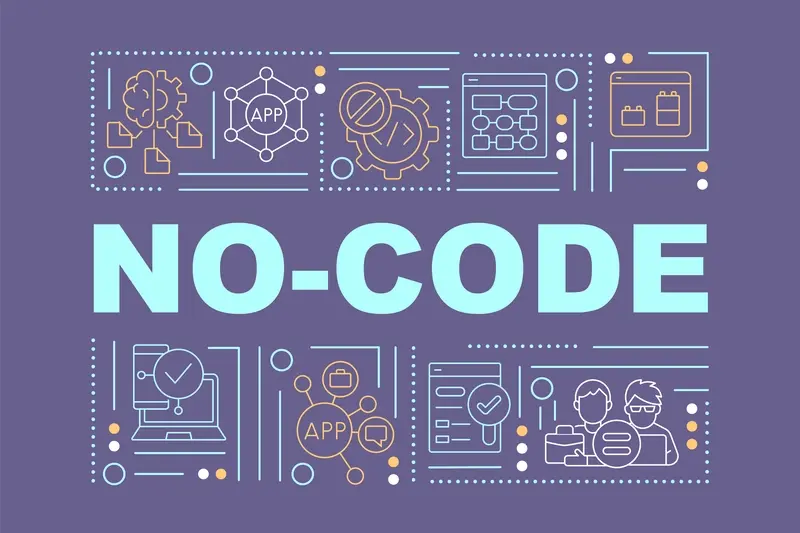Can You Trust Free App Analytics Tools?
Nearly every mobile app developer has fallen into the same trap at some point—trusting free analytics tools without questioning their reliability. The numbers look good, the dashboards are pretty, and the price is right. But here's the uncomfortable truth: your app's success might be built on shaky data foundations.
Free analytics tools promise the world. They offer insights into user behaviour, track app performance, and measure everything from downloads to revenue. The appeal is obvious—why pay for expensive analytics when you can get similar features for nothing? This thinking has led millions of app developers down a path that could be costing them far more than they realise.
The biggest mistake I see developers make is assuming that free analytics tools provide the same measurement accuracy as their paid counterparts—they rarely do
Tool reliability isn't just about whether the software works or crashes. It's about whether the data you're getting is accurate, complete, and actionable. When your mobile app's future depends on making smart decisions based on user data, the stakes couldn't be higher. A single misreported metric could lead you to optimise the wrong features, target the wrong audience, or worse—abandon a potentially successful app altogether.
This guide will help you understand when free analytics tools can be trusted and when they might be leading you astray.
What Are Free App Analytics Tools?
I've been working with mobile app analytics for years now, and I can tell you that free analytics tools are exactly what they sound like—software platforms that help you track how people use your app without charging you any money upfront. These tools collect data about your users, showing you things like how many people downloaded your app, which features they use most, and where they tend to stop using it.
The most popular free option is Google Analytics for Firebase, which comes built into Google's mobile development platform. Apple offers App Analytics through App Store Connect, giving you basic insights about your iOS app's performance. There are also third-party options like Mixpanel's free tier and Amplitude's starter plan—both offer limited but useful tracking capabilities.
What These Tools Actually Track
Free analytics tools typically monitor user behaviour, app crashes, and basic performance metrics. They'll show you screen views, user sessions, and demographic information about your audience. Some track custom events you set up, like when someone completes a purchase or shares content.
The key thing to understand is that these tools work by embedding tracking code into your app. Every time someone opens your app or taps a button, the tool records that action and sends the data to their servers for processing.
The Business Model Behind "Free"
Here's what most people don't realise—nothing is truly free in the tech world. These companies offer free tiers because they want you to upgrade to paid plans once your app grows. They're also collecting valuable data about user behaviour patterns that helps improve their own products and services.
- Google uses the data to improve their advertising algorithms
- Free tiers often have strict limits on data volume or features
- You might face restrictions on data export or historical access
- Customer support is usually limited or non-existent
The Appeal of Free Analytics Solutions
Let's be honest—free is a pretty powerful word when you're running a mobile app business. I've worked with countless clients over the years, and almost every single one has asked me about free analytics tools at some point. Can you blame them? When you're trying to keep costs down and budgets tight, the idea of getting detailed insights about your app's performance without paying a penny sounds brilliant.
Free analytics tools promise to show you how many people are using your app, what they're doing inside it, and where they might be getting stuck. Google Analytics, Firebase, and similar platforms offer dashboards that look professional and provide charts that seem comprehensive. For many app developers, these tools appear to tick all the boxes without touching the budget.
The appeal goes beyond just saving money though. These platforms are usually quick to set up and come with familiar interfaces that most people can navigate without extensive training. You can literally have basic tracking running within hours of deciding you need it.
Before choosing any analytics solution, write down exactly what data you need to make business decisions—this helps you evaluate whether free tools actually meet your requirements.
But here's where things get interesting. While free analytics tools can provide valuable data, the question of tool reliability and measurement accuracy becomes more complex when you start digging deeper into what these platforms actually deliver.
Common Accuracy Problems in Free Tools
After working with countless mobile apps over the years, I've seen firsthand how free analytics tools can sometimes paint a misleading picture of what's actually happening with your app. The biggest problem? Data accuracy issues that can quietly skew your understanding of user behaviour.
Sampling is probably the most common culprit—many free tools don't track every single user interaction. Instead, they take a sample and extrapolate from there. This might work fine for massive apps with millions of users, but if you're a smaller app, those estimates can be way off the mark.
The Most Common Data Problems
- Session tracking gets confused when users switch between apps quickly
- Bot traffic isn't always filtered out properly, inflating your user numbers
- Revenue tracking can miss in-app purchases or attribute them incorrectly
- Geographic data often shows the server location rather than the actual user location
- Real-time reporting can have delays of several hours or even days
The tricky part is that these problems aren't obvious—your dashboard will still show neat charts and graphs. But the numbers behind them might not reflect reality. I've seen apps make major product decisions based on faulty data, only to discover later that their users were behaving completely differently than the analytics suggested.
Understanding Data Limitations and Restrictions
Free analytics tools come with strings attached—and I'm not talking about the ones you can easily cut. These platforms need to make money somehow, so they'll often restrict what data you can access or how much of it you can see. Most free tools will show you basic metrics like downloads and active users, but the really useful stuff? That's usually locked behind a paywall.
Take user behaviour tracking, for instance. A free tool might tell you that 1,000 people opened your mobile app yesterday, but it won't tell you what they did next or where they got stuck. This limited view makes it incredibly difficult to improve your app's performance or fix problems that are driving users away.
Sample Size Restrictions
Many free analytics platforms also cap how much data they'll process. Once you hit a certain number of users or events, they'll either start charging you or simply stop collecting information. This creates a frustrating situation where your app's growth actually makes your analytics less reliable.
The most valuable insights often come from the data that free tools don't show you
Export limitations are another headache. Free tools rarely let you download your data in useful formats, making it nearly impossible to create custom reports or share insights with your team. This lack of flexibility can seriously impact your ability to make informed decisions about your mobile app's development and marketing strategies.
Reliability Issues That Could Affect Your Decisions
After years of working with different analytics platforms, I've learned that reliability problems with free tools can seriously mess up your app strategy. The biggest issue? Data inconsistency—one day your numbers look great, the next they've dropped by 30% for no obvious reason.
Free analytics tools often struggle with real-time data processing, which means you might be making decisions based on information that's hours or even days old. I've seen clients panic about user drops that weren't actually happening; the tool just hadn't updated properly.
Server Downtime and Data Gaps
Free services don't guarantee uptime the way paid ones do. When their servers go down, you lose tracking data completely—and there's no way to get that information back. This creates gaps in your analytics that can skew your understanding of user behaviour patterns.
Support Limitations
When something goes wrong with a free tool, you're pretty much on your own. No phone support, limited documentation, and community forums that might not have answers to your specific problems.
| Reliability Issue | Impact on Decision Making |
|---|---|
| Data delays | Outdated insights for time-sensitive decisions |
| Server downtime | Missing data creates incomplete picture |
| Inconsistent tracking | False trends and incorrect conclusions |
The bottom line? These reliability issues can lead you to make poor decisions about your app's future—and that's a risk worth considering carefully.
When Free Tools Might Work for Your Mobile App
Free analytics tools aren't always the wrong choice—sometimes they're actually perfect for what you need. If you're running a small mobile app with basic tracking requirements, free solutions might give you enough data to make smart decisions without breaking the bank.
Simple apps with straightforward user journeys often work well with free tools. Think about a basic calculator app or a simple note-taking tool—you don't need complex funnel analysis or advanced segmentation. You just want to know how many people are using your app and which features they prefer.
Best Scenarios for Free Analytics
- Apps with fewer than 10,000 monthly active users
- Simple tracking needs like basic user counts and session length
- Early-stage apps testing initial market fit
- Personal projects or hobby apps
- Apps with limited budgets during development phase
The key is matching your tool reliability expectations with your actual needs. If you need rough numbers to understand general trends, free tools can provide that level of measurement accuracy. But if you're making major business decisions based on precise user behaviour data, you'll want something more robust.
Start with free tools during your app's early days, then upgrade to paid analytics once you understand exactly what metrics matter most for your specific mobile app.
Free tools work best when you view them as a starting point rather than a permanent solution. They help you learn what questions to ask before investing in more sophisticated analytics.
Conclusion
Free app analytics tools aren't the enemy—they're just not the complete solution most people think they are. I've watched too many app developers make costly mistakes because they trusted data that wasn't quite right or miss opportunities because their free tools didn't show them the full picture. The real question isn't whether you can trust them, but whether you understand what you're getting and what you're not.
For early-stage apps or simple projects, free tools can absolutely get you started. They'll give you basic insights about downloads, user activity, and crashes. But as your app grows and you need to make bigger decisions about features, marketing spend, or user experience changes, you'll quickly hit their limits. The data gaps, accuracy issues, and restricted features we've covered throughout this guide become real problems when you're trying to scale.
My advice? Start with free tools if budget is tight, but plan your upgrade path from day one. Know what questions you'll need answered as you grow and choose tools that can grow with you. The cost of good analytics is always less than the cost of making decisions based on incomplete information. Trust me on that one—I've seen the invoices!
Share this
Subscribe To Our Learning Centre
You May Also Like
These Related Guides

Which No-Code Platform Should You Choose for Your App?

Should I Use No-Code Tools to Build My MVP?



